When we first introduced the supplement community to Ergothioneine in 2020, we knew we were onto something special. This unique sulfur-containing amino acid, which we dubbed "the antioxidant the world forgot", showed tremendous promise as a cellular protector with potent free radical scavenging capabilities. What we couldn't have predicted was how quickly the scientific community would rally behind this molecule, elevating it from an interesting antioxidant to what many now consider a "longevity vitamin" essential for healthy aging.
Ergothioneine: Three New Major Scientific Reviews to Cover
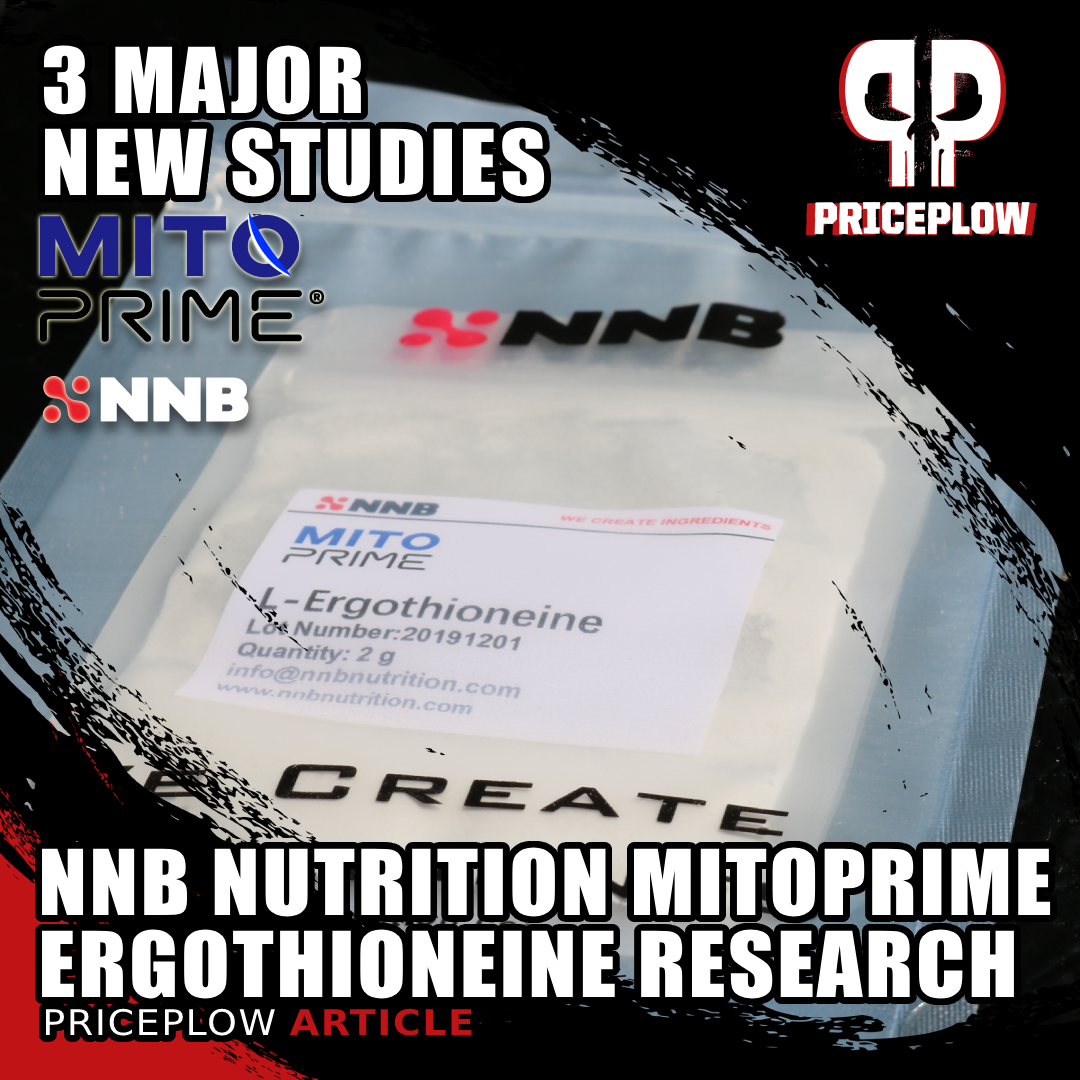
Three major scientific reviews now support Ergothioneine as a "longevity vitamin" essential for healthy aging! MitoPrime by NNB Nutrition delivers pharmaceutical-grade L-Ergothioneine to protect your cells from oxidative damage and support cognitive health.
In just the past few years, three major scientific reviews published in 2022, 2023, and 2024 have substantially strengthened the case for Ergothioneine supplementation.[1-3] These comprehensive analyses have shed new light on this remarkable compound's role in not just extending lifespan but improving healthspan, the period of life spent in good health, free from the chronic diseases and disabilities associated with aging.
With celebrities like David Beckham launching longevity-focused supplement lines (IM8 Wellness) and high-risk biohackers like Bryan Johnson popularizing his "Don't Die" campaign, the conversation around aging has shifted dramatically from simply prolonging life to optimizing how we age.
The timing couldn't be better for NNB Nutrition's MitoPrime, their 99% pure L-Ergothioneine ingredient produced through an advanced fermentation process. This pharmaceutical-grade ingredient has established itself as the gold standard in the industry at a time when consumers are increasingly seeking evidence-based solutions for healthier aging.
In this article, we'll explore the findings from these groundbreaking reviews, examining how they've expanded our understanding of Ergothioneine's mechanisms, reinforced its status as potentially essential for human health, and strengthened the case for its inclusion in any comprehensive longevity and performance stack.
Before diving into the science, sign up for PricePlow's NNB Nutrition and MitoPrime news so you get notified of the latest updates of this fascinating ingredient:
Subscribe to PricePlow's Newsletter and Alerts on These Topics
If this is your first time learning about this powerhouse ingredient, a full description is in our article titled "Ergothioneine: The Immunity and Energy Protector". Below, we cover the three massive reviews published since that article was written:
-
The Comprehensive Case: Paul’s “Stress Vitamin” Review (2022)
In 2022, Dr. Bindu Paul from Johns Hopkins University School of Medicine published a landmark review in Antioxidants & Redox Signaling that crystallized the case for Ergothioneine as a "stress vitamin", meaning a compound that, while not essential for basic survival, becomes critical during periods of physiological stress.[1]
The Birth of the “Stress Vitamin” Concept
Paul's designation of Ergothioneine as a "stress vitamin" represents a paradigm shift in nutritional science. Unlike traditional vitamins which are required for everyday function, stress vitamins come into play during adverse conditions, serving as a final line of defense when primary antioxidant systems become overwhelmed.[1]
This concept helps explain why Ergothioneine deficiency doesn't present with immediate, obvious symptoms like classical vitamin deficiencies. Instead, its importance becomes apparent during times of oxidative challenge, inflammation, or other physiological stressors – explaining why lower levels of Ergothioneine correlate with various age-related diseases rather than a single deficiency syndrome.[1]
Unique Physicochemical Properties
What makes ergothioneine special among antioxidants are its unusual physical and chemical characteristics. Unlike most thiols (sulfur-containing compounds) that rapidly auto-oxidize, ergothioneine exists predominantly in its thione form, making it exceptionally stable.[1] Its stability means it doesn't generate free radicals during oxidation like glutathione can, making it a "clean" antioxidant.[1]
Ergothioneine also absorbs light in certain UV ranges, which allows it to function as a natural UV filter, protecting cellular components from radiation damag. This is a feature that's led to its use in skincare products.[1]
Powerful Neuroprotective Effects
Paul's review places special emphasis on Ergothioneine's neuroprotective capabilities. The brain, with its high oxygen consumption and lipid content, is vulnerable to oxidative damage. Ergothioneine not only crosses the blood-brain barrier but also accumulates in multiple brain regions, with especially high concentrations in the cerebellum.[1]
The neuroprotective benefits include:
- Protection against excitotoxicity: Ergothioneine has demonstrated protection against neurotoxicity induced by the excitotoxin N-methyl-D-aspartate (NMDA) in vivo.[1]
- Amyloid-beta defense: Studies found that mice injected with amyloid-beta developed learning and memory deficits, while those pretreated with Ergothioneine were protected from these cognitive impairments.[1]
- Support for neuronal differentiation: Ergothioneine may promote neuronal differentiation through activation of the TrkB signaling pathway and by upregulating neurotrophin-5, suggesting a role in neural repair and maintenance.[1]
- Potential role in mood regulation: In a social defeat stress model in rats, Ergothioneine administration prevented depression-like social avoidance and sleep abnormalities, indicating potential benefits for mental health.[1]
Illustration of ergothioneine's multiple brain-protective mechanisms, including inhibition of excitotoxicity, prevention of amyloid toxicity, support for neuronal differentiation, and protection against neurotoxins. Also depicts the gut-brain axis connection, where microbiota-produced ergothioneine helps defend against stress effects.[1]
Perhaps most compelling is the emerging evidence linking Ergothioneine deficiency to neurodegenerative disorders. Metabolomic analyses of Parkinson's disease patients revealed significantly lower Ergothioneine levels, suggesting a compromised antioxidant defense system.[1] Similarly, diminished Ergothioneine levels have been observed in patients with vascular dementia and other cognitive disorders.
Cardiovascular Benefits
The vascular system, constantly under oxidative challenge, represents another key target for Ergothioneine's protective effects. Paul's review highlights multiple mechanisms through which Ergothioneine supports cardiovascular health:[1]
- Endothelial protection: Endothelial cells actively import Ergothioneine, which helps protect against oxidative damage and preserve normal function.
- Prevention of monocyte binding: Ergothioneine inhibits the binding of monocytes to endothelial cells, an early event in cardiovascular dysfunction and atherosclerosis.
- Improved vasorelaxation: The compound elicits concentration-dependent relaxation in endothelium-intact aortic rings, promoting healthy blood flow.
- Protection against superoxide damage: Ergothioneine shows efficacy in neutralizing superoxide-induced impairment of vasorelaxation.
These mechanisms may explain why higher blood ergothioneine levels are associated with reduced cardiovascular mortality in population studies... a finding that underscores its potential as a cardioprotective nutrient.[1]
Anti-Aging Effects and Cellular Stress Resistance
Found in mushrooms and organ meats, ergothioneine is the oldest -- and most overlooked -- antioxidant on the market.
Possibly most relevant to the "healthspan" conversation is ergothioneine's connection to aging processes. Paul notes that blood ergothioneine levels decrease significantly beyond age 60, and that these diminished levels correlate with cognitive decline and other age-related pathologies.[1]
At the cellular level, the molecule has been shown to delay endothelial cell senescence caused by high glucose exposure through mechanisms involving SIRT1 and SIRT6, which are key regulators in the aging process.[1]
The review also highlights its role in cellular stress response. When tissues are under oxidative challenge, ergothioneine transporter (OCTN1/SLC22A4) expression increases, allowing for greater accumulation of this protective molecule exactly where it's needed. This has been observed in models of liver fibrosis, fatty liver disease, and cardiovascular injury, suggesting ergothioneine as part of an adaptive defense mechanism.[1]
Free Radical Neutralization Capabilities
Paul also details ergothioneine's impressive spectrum of antioxidant activities. It effectively neutralizes numerous reactive oxygen and nitrogen species, including:[1]
- Hydroxyl radicals (•OH)
- Superoxide (O₂⁻)
- Peroxynitrite (ONOO⁻)
- Hypochlorous acid (HOCl)
- Singlet oxygen (¹O₂)
Ergothioneine also has the incredible ability to neutralize singlet oxygen, and at rates significantly higher than other antioxidants. This may be especially relevant in tissues exposed to UV radiation or in the eye, where photosensitizers can generate singlet oxygen.[1]
Paul’s Conclusion: A Case for Ergothioneine as an Essential Nutrient
Paul concludes her comprehensive review by arguing that ergothioneine meets the criteria for classification as a vitamin:[1]
Prime your Mitochondria by sending it the strongest antioxidant they're already wired for - ergothioneine via MitoPrime.
- It cannot be synthesized by mammals and must be obtained through diet
- It has a dedicated transporter (OCTN1/SLC22A4) for selective uptake
- Its deficiency correlates with poor health outcomes
- Its presence shows clear physiological benefits
- It is concentrated in tissues predisposed to oxidative stress
- The body retains it with high avidity
As Paul states,
"These properties suggest a role for ET as a bulwark, a final defense for cells against oxidative damage. Evidence that ET is a physiological antioxidant raises the question of its status in biology. Despite its high concentration and ubiquitous presence, mammalian ET is mostly derived from dietary sources. The existence of ETT establishes ET as an important normal body constituent, and in this regard, ET fits the definition of a vitamin."[1]
This comprehensive assessment provides robust scientific backing for NNB Nutrition's MitoPrime L-Ergothioneine as a foundational ingredient in any longevity and healthspan-focused supplement regimen.
-
The Dietary Perspective: Tian’s “Underrecognized Micronutrient” (2023)
While Paul's 2022 review established ergothioneine's credentials as a "stress vitamin", a comprehensive 2023 review by Xiaoying Tian and colleagues from the University of Leeds took a deeper look at ergothioneine from a nutritional science perspective. Published in the British Journal of Nutrition, their paper titled "Ergothioneine: an underrecognised dietary micronutrient required for healthy ageing?" built a phenomenal case for considering ergothioneine an essential dietary component.[2]
Ergothioneine serves several roles in the system, and we're already wired for it! But are you getting any in your diet?[4]
Ergothioneine as a Dietary Micronutrient
Tian's review emphasizes ergothioneine's unique place in human nutrition. Unlike most antioxidants, it exists primarily in its thione form at physiological pH and possesses a very high redox potential, making it very stable and resistant to auto-oxidation compared to other thiols (again, such as glutathione).[2]
This stability is one reason ergothioneine is such an effective antioxidant and cytoprotectant with significant metal chelation properties. The review highlights how increasing evidence suggests ergothioneine may be critical for preventing inflammatory and cardiometabolic diseases, leading various researchers to variously classify it as a vitamin, "longevity vitamin", or nutraceutical.[2]
Food Sources and Bioavailability
One of the most valuable contributions of Tian's review is its comprehensive analysis of ergothioneine content in various foods. The paper includes extensive tables detailing ergothioneine levels across food categories, providing unprecedented insight into dietary sources of this compound.
-
Mushrooms: The Premier Source
Mushrooms stand out as the richest dietary source of ergothioneine, though concentrations vary dramatically depending on species and growing conditions. Some key findings include:
- Oyster mushrooms contain some of the highest levels, with golden oyster mushrooms cultivated in grape marc reaching up to 11,800 mg/kg (dry weight)
- Porcini mushrooms contain approximately 1,812 mg/kg (dry weight)
- Shiitake mushrooms range from 353-2,090 mg/kg depending on processing and measurement methods
Interestingly, cultivation practices significantly impact ergothioneine content, with soil health and composition playing crucial roles. This explains the wide variation observed even within the same mushroom species from different sources.[2]
-
Fermented Foods: An Overlooked Source
Fermented foods are another significant source of ergothioneine, with content levels dependent on the bacterial species used in fermentation:
Visual overview of major food sources containing ergothioneine, with mushrooms having the highest concentration. Other sources include red meat, black beans, nuts, milk, oats, and plants that absorb it from soil fungi.[1]
- Fermented shiitake with certain probiotic bacteria can contain 1,260-1,775 mg/kg
- Tempeh contains approximately 201 mg/kg (dry weight)
- Fermented rice (bran, white, and brown) contains 59-176 mg/kg (wet weight)
-
Other Food Sources
While not as concentrated as mushrooms, several other foods contribute to dietary ergothioneine intake:
- Certain beans and legumes (black turtle beans: 13.5 mg/kg)
- Garlic (3-35 mg/kg depending on measurement method)
- Oat bran (4.4 mg/kg)
- Organ meats like liver and kidney (7-11 mg/kg) (note, however, that we do not recommend eating these -- see Episode #150 of the PricePlow Podcast to understand why)
The review also notes that ergothioneine is thermally stable and doesn't degrade during cooking, a valuable property for a nutritional compound.[2]
Absorption, Transport, and Tissue Distribution
Tian's review provides exceptional detail on how ergothioneine is absorbed, transported, and distributed throughout the body – critical information for understanding its biological relevance.
The SLC22A4 Transporter: The Body’s Ergothioneine Gateway
The discovery of SLC22A4 (formerly known as OCTN1), a dedicated membrane transporter for ergothioneine, provided crucial evidence for ergothioneine's biological importance. This transporter:
- Is highly expressed on the apical membrane of the small intestine
- Functions in a pH-dependent manner to absorb dietary ergothioneine
- Is also expressed on the apical membrane of proximal tubular cells in the kidney, facilitating renal reabsorption
- Shows remarkable specificity for ergothioneine, with transport efficiencies for other substrates orders of magnitude lower
The review notes that knockout of SLC22A4 in mice and zebrafish results in dramatic reductions of ergothioneine to virtually undetectable levels in many tissues and increases susceptibility to oxidative stress and inflammation.[2]
Comprehensive diagram depicting ergothioneine's transport across various cell types. Featured are: (a) membrane transport via SLC22A4/SLC22A15 transporters, (b) intestinal absorption, (c) blood cell uptake, (d) hepatocyte interaction, (e) stellate cell activity, and (f) renal reabsorption mechanisms that explain ergothioneine's remarkable retention in the body.[2]
Tissue Distribution and Retention
One of ergothioneine's most fascinating characteristics is how the body prioritizes its retention. Tian highlights that both animals and humans show avid absorption and retention of ergothioneine, with minimal urinary excretion. Key insights include:
- In humans, ergothioneine is rapidly absorbed after oral administration
- Only minimal increases (<4%) in urinary excretion are observed even after supplementation
- Ergothioneine primarily accumulates in whole blood, liver, kidney, and even crosses into the brain
- Despite SLC22A4 being barely detectable in adult human liver (unlike in rodents), humans still effectively retain ergothioneine, suggesting additional mechanisms or transport systems
The review also discusses the putative metabolites of ergothioneine, including hercynine (desulfurated ergothioneine), ergothioneine sulfonate, and S-methyl-ergothioneine, which may play roles in its metabolism and elimination.[2]
Evidence for Ergothioneine’s Role in Healthy Aging and Disease Prevention
Molecular structures of three key ergothioneine metabolites: (a) Hercynine, the desulfurated form; (b) Ergothioneine sulfonate, the oxidized derivative; and (c) S-methyl-ergothioneine, the methylated variant. These compounds represent the body's processing pathways for ergothioneine.[2]
Tian's review compiles compelling evidence for ergothioneine's importance in promoting healthy aging and preventing age-related diseases.
-
Cardiovascular Protection
The review describes an important Swedish cohort study following 3,236 participants over a median of 21.4 years. This study found that higher plasma levels of ergothioneine were associated with significantly lower risk of coronary disease, cardiovascular mortality, and overall mortality. The hazard ratios were 0.85, 0.79, and 0.86 respectively, demonstrating a strong protective effect.[2]
Those findings align with preclinical studies showing ergothioneine's ability to protect vascular and microvascular endothelial cells from oxidative stress and hyperglycemia. The review explains how ergothioneine can inhibit the expression of adhesion molecules (like E-selectin, ICAM-1, and VCAM-1) in human aortic endothelial cells and reduce the adhesion of monocytes – a key initiating step in atherosclerosis.[2]
-
Cognitive Health and Neuroprotection
Building on the foundation established in Paul's review, Tian and colleagues further emphasize ergothioneine's importance for brain health. They note that blood levels of ergothioneine begin to decline linearly after age 60, and multiple case-control studies have found lower ergothioneine levels in older adults with:[2]
- Mild cognitive impairment
- Dementia
- Parkinson's disease
In fact, a prospective elderly cohort study in Singapore (n=470, mean age 73) revealed that lower baseline ergothioneine levels were associated with worse baseline cognitive performance and faster rates of decline across multiple cognitive domains over a 5-year follow-up period.
-
Metabolic Health Benefits
The review also presents evidence for ergothioneine's potential to improve metabolic health markers. Studies in diabetic rats supplemented with ergothioneine showed remarkable improvements in:
As you can see in this picture of NNB's MitoPrime Powder, L-Ergothioneine is a very light, white powder
- Markers of liver injury (reduced liver weight and TAG content)
- Inflammatory markers (reduced TNF-α and TGF-β1)
- Liver enzymes (decreased ALT, AST, and ALP)
- Kidney function markers (reduced hypertrophy, serum creatinine, and blood urea nitrogen)
Molecular analysis revealed that ergothioneine attenuated diabetes-related alterations in sirtuin-1 and NF-κB expression in the liver, as well as affecting lipid metabolism pathways involving SREBP1 and fatty acid synthase.[2]
The Case for Ergothioneine as a “Conditionally Essential” Nutrient
Perhaps the most significant contribution of Tian's review is the team's consideration of whether ergothioneine should be classified as a "conditionally essential" micronutrient.
What Makes a Nutrient “Conditionally Essential”?
The review explains that conditionally essential nutrients are those that may be synthesized in adequate amounts endogenously but can become rate-limiting under clinical conditions of stress, whether from anabolic processes (growth, pregnancy, lactation), infection, or trauma. Critically, conditionally essential nutrients, when supplied exogenously, can correct clinically relevant outcome measures.[2]
The paper references Grimble's five criteria from 1993 defining conditionally essential nutrients in humans, where deficiency results in either:
- Failure to maintain growth or nitrogen balance
- Organ dysfunction
- Delayed recovery
- Metabolic abnormalities
- Clinical abnormalities
Metabolic and clinical abnormalities encompass conditions like obesity and cardiometabolic disease, which are precisely the areas where ergothioneine shows potential benefits.[2]
Evidence Supporting Conditional Essentiality
Provided are several lines of evidence suggesting ergothioneine meets the criteria for a conditionally essential nutrient:
- Dietary acquisition: Mammals cannot synthesize ergothioneine and must obtain it from food
- Specific transporter: The existence of SLC22A4, a highly specific transporter, suggests evolutionary importance
- Tissue concentration: Ergothioneine accumulates in tissues frequently exposed to oxidative stress
- Strong retention: Both humans and animals show remarkable retention of ergothioneine with minimal excretion
- Health correlations: Lower ergothioneine levels correlate with increased risk of age-related diseases
- Genetic evidence: Knockout of SLC22A4 increases susceptibility to oxidative stress and inflammation
While no specific "ergothioneine deficiency" has been identified (likely due to its widespread presence in foods), the review argues that its importance becomes apparent during aging and disease states when oxidative challenges increase.[2]
There are several reasons why so many people feel great when adding mushrooms back to their diet. We argue that ergothioneine is a major component.
Looking to the Future
The authors note that while sufficient preclinical and epidemiological data exist to hypothesize ergothioneine's importance in preventing cardiometabolic disease and promoting healthy aging, human intervention trials are only just beginning. They reference their own "ErgMS" study,[5] a three-arm randomized, double-blind, placebo-controlled trial investigating ergothioneine supplementation (placebo, 5mg, or 30mg daily) in middle-aged adults with metabolic syndrome.[5]
They conclude that such controlled human intervention trials are required to definitively assess whether ergothioneine is truly a dietary micronutrient required for healthy aging and the prevention of cardiometabolic disease.
Implications for Supplementation with MitoPrime
Tian's incredible review provides strong support for the inclusion of high-quality ergothioneine supplements like NNB Nutrition's MitoPrime in health regimens aimed at promoting healthy aging and metabolic wellness.
The extensive food source data highlights a potential issue for many people: without regular consumption of mushrooms or specific fermented foods, dietary ergothioneine intake may be suboptimal. Additionally, the fact that ergothioneine levels naturally decline with age suggests that older adults, in particular, may benefit from supplementation.
The review's discussion of ergothioneine's absorption and tissue distribution underscores the efficiency with which the body utilizes this compound: it's rapidly absorbed, widely distributed to tissues that need it most, and carefully retained rather than excreted. This biological conservation mechanism further supports the notion that ergothioneine plays crucial physiological roles beyond typical dietary antioxidants.
When considering MitoPrime's place in the dietary supplement landscape, this review provides excellent evidence that ergothioneine supplementation could be especially useful for:
- Adults over 60, when natural levels begin to decline
- Those with increased cardiovascular risk factors
- Individuals concerned about cognitive health and performance
- Anyone dealing with metabolic challenges or insulin resistance
This comprehensive analysis of ergothioneine as a dietary component strengthens the foundation for MitoPrime as a scientifically-backed ingredient targeting multiple aspects of healthy aging and metabolic wellness.
-
-
The Anti-Aging Mechanisms: Chen’s Pharmacophore Research (2024)
The most recent scientific review, published in early 2024 by Li Chen and colleagues in the prestigious journal Protein & Cell, represents the most mechanistically detailed analysis we've seen on ergothioneine's anti-aging properties. This groundbreaking paper, titled "Ergothioneine and its congeners: anti-ageing mechanisms and pharmacophore biosynthesis",[3] Dives deep into the molecular pathways through which ergothioneine exerts its protective effects and examines its unique chemical structure in relation to its biological activity.
Dual Antioxidant Mechanisms: Direct Scavenger and Defense System Regulator
While previous research established ergothioneine's free radical scavenging capabilities, Chen's review provides a much more nuanced understanding of its antioxidant function. The authors propose that ergothioneine acts as both a direct antioxidant and as a regulator of cellular antioxidant defense systems.[3]
Chemical representation showing ergothioneine's unique tautomeric structure. The molecule shifts between thione and thiol forms, with the thione form dominant at physiological pH, giving ergothioneine exceptional stability compared to typical sulfur-containing antioxidants.[2]
As a direct antioxidant, ergothioneine effectively neutralizes a diverse spectrum of reactive oxygen species, adding even more to the list shown above:
- Singlet oxygen (¹O₂)
- Superoxide radicals (O₂⁻)
- Hydrogen peroxide (H₂O₂)
- Hydroxyl radicals (·OH)
- Peroxynitrite (ONOO⁻)
- Hypochlorous acid (HOCl)
Chen's team points out a critical insight: ergothioneine's redox potential is significantly higher than classical antioxidants like glutathione! This suggests that in living cells, ergothioneine may not primarily function as a first-line antioxidant.[3]
Instead, the team proposes that ergothioneine becomes more important when primary antioxidants like glutathione are depleted during oxidative stress. This "second line of defense" model explains why ergothioneine's benefits become most apparent in situations of elevated oxidative challenge, such as aging and disease states.[3]
KEAP1-NRF2 Pathway: Ergothioneine’s Master Switch
One of the most groundbreaking contributions of Chen's review is its detailed analysis of how ergothioneine interacts with the KEAP1-NRF2 signaling pathway, the body's primary regulator of antioxidant defense genes.[3]
Under normal conditions, NRF2 (Nuclear Factor Erythroid 2-Related Factor 2) is bound to KEAP1 (Kelch-like ECH-Associated Protein 1) and Cullin3 (CUL3), which targets it for proteasomal degradation, keeping cellular NRF2 levels low. During oxidative stress, this degradation process is disrupted, allowing NRF2 to accumulate and activate the Antioxidant Response Element (ARE) of numerous protective genes.[3]
Chen's team presents evidence that ergothioneine regulates this pathway in a dose-dependent manner, resulting in upregulation of critical downstream antioxidant genes including:
With such a massive list of benefits shown from ergothioneine, why haven't we heard more about it? This is a must-research immune system supplement ingredient that can protect numerous organ systems.[7]
- Heme oxygenase-1 (HO-1)
- NAD(P)H: quinone oxidoreductase (NQO1)
- Superoxide dismutase (SOD)
- Catalase (CAT)
The research goes deeper, and biochemistry buffs will greatly appreciate it, but it's mostly out of the scope of this blog. There are several kinase pathways involved, and computer modeling shows additional mechanisms on NRF2 and the ability to activate antioxidant genes.
The findings ultimately represent a significant advancement in the scientific community's understanding of ergothioneine's biological activity, positioning it not just as a passive antioxidant but as an active modulator of cellular defense systems.
Genome Stability: Protecting DNA Integrity
Chen's review gives evidence for ergothioneine's role in maintaining genomic stability, a critical factor in the aging process. DNA damage, predominantly caused by oxidative stress, is a primary hallmark of aging that contributes significantly to age-related problems.[3]
The integrity of both nuclear and mitochondrial DNA continually declines due to exogenous factors and endogenous damage from reactive oxygen and nitrogen species. Chen highlights how Ergothioneine prevents this damage through multiple mechanisms:
- Direct ROS/RNS neutralization: Ergothioneine effectively scavenges the free radicals that would otherwise damage DNA.[3]
- UV protection: Functioning as a physiological UV protectant, Ergothioneine can absorb light in the UV range directly while also enabling DNA repair mechanisms in UV-irradiated cells.[3]
- Mitochondrial DNA protection: Mitochondria produce approximately 90% of cellular ROS. Ergothioneine has been shown to reduce ROS production and inhibit oxidative damage to mitochondrial DNA, which is particularly vulnerable due to its proximity to ROS generation sites.[3]
- Possible mitochondrial localization: Some evidence suggests that OCTN1 (the Ergothioneine transporter) may be present in mitochondria, where Ergothioneine could offer direct protection against oxidative damage. While this remains controversial, studies show Ergothioneine accumulation in mitochondria after supplementation.[3]
These DNA-protective effects may explain Ergothioneine's association with reduced risk of age-related diseases and longevity, as genomic instability is a fundamental driver of the aging process.
Epigenetic Impact: Regulating the Aging Program
One of the other groundbreaking aspects of Chen's review is its exploration of Ergothioneine's potential impact on epigenetic regulation, meaning the chemical modifications to DNA that control gene expression without altering the genetic code itself.[3]
Epigenetic alterations are another primary hallmark of aging. Chen's team proposes that Ergothioneine's antioxidant properties may indirectly but significantly influence the epigenetic landscape through several interconnected mechanisms:[3]
-
Methylation Dynamics
The review details how ergothioneine may affect epigenetic methylation by influencing the availability of S-adenosylmethionine (SAMe), the universal methyl donor used by numerous DNA-based methylation enzymes.[3]
Detailed pathway diagram illustrating how ergothioneine affects epigenetic modifications through its antioxidant properties. By neutralizing reactive oxygen species and maintaining glutathione levels, ergothioneine supports methylation via SAM synthase activity while simultaneously preserving iron homeostasis needed for demethylation enzymes.[3]
-
Iron-Dependent Demethylation Enzymes
Equally important is ergothioneine's potential impact on demethylation processes. Epigenetic demethylases like the Ten-Eleven Translocation (TET) family are iron-dependent enzymes whose activity is significantly affected by the availability of iron in the labile iron pool.[3]
Chen's team explains how oxidative stress can disrupt iron homeostasis by releasing iron from storage proteins hat can ultimately generate very toxic hydroxyl radicals. By neutralizing these reactive species, ergothioneine may prevent iron dysregulation and maintain the proper function of demethylation enzymes.[3]
-
Sirtuin Pathway Regulation
Ergothioneine can also directly influence the Sirtuin pathway, as describd above. This is an NAD⁺-dependent family with profound implications for aging and longevity.[3]
Dual-panel illustration showing both the body-wide distribution of dietary ergothioneine (left) and its molecular signaling mechanism (right). The compound is absorbed through the gut, distributed to various tissues including brain and kidneys, and activates the NRF2 pathway to trigger antioxidant gene expression.[2]
The review cites research showing that ergothioneine upregulates both SIRT1 and SIRT6, as mentioned in the Paul review. These two Sirtuins strongly associated with extended lifespan and age-related disease prevention, and ergothioneine is protective when they're reduced or inhibited.[3]
Chen's team proposes that Ergothioneine may support Sirtuin activity by maintaining NAD⁺ levels and preventing oxidative post-translational modifications to the Sirtuin enzymes themselves. This creates what they call an "Ergothioneine-Epigenome-Longevity axis" that represents a novel mechanism through which Ergothioneine may promote healthy aging.[3]
Cellular schematic showing ergothioneine's involvement in two critical longevity pathways. The compound upregulates the KEAP1-NRF2 complex to activate antioxidant genes while simultaneously enhancing SIRT1/SIRT6 expression. These pathways converge to reduce ROS damage, protect mitochondria, and regulate critical epigenetic modifications.[3]
Biosynthetic Uniqueness: Nature’s Special Creation
If you want to know how ergothioneine is made in nature, the Chen review also provides in-depth analysis of its biosynthesis, helping explain why this compound is so uniquely suited to its biological roles.[3] This is the story we love telling:
Evolutionary Ancient Origins
Fascinatingly, ergothioneine appears to have arisen very early in evolutionary history. Biosynthetic pathways for Ergothioneine have been identified in anaerobic bacteria, suggesting it may have been present even before oxygen became abundant in Earth's atmosphere (during the "great oxygenation event"). This ancient origin may explain why ergothioneine is so widely distributed across different organisms and why mammals have evolved specific transporters to acquire it from diet.[3]
Multiple Biosynthetic Pathways
Chen's team details several distinct biosynthetic routes for ergothioneine production -- it can be made with and without oxygen:
- Oxygen-dependent pathways: Most common in fungi and certain bacteria, these involve iron-dependent sulfoxide synthases (EgtB and Egt1) that catalyze unusual oxidative carbon-sulfur bond formation.[3]
- Oxygen-independent pathways: Recently discovered in anaerobic bacteria, these involve enzymes like EanB and MES (Metallopterin-dependent Ergothioneine Synthase) that create C-S bonds without requiring oxygen.[3]
These diverse biosynthetic routes highlight the evolutionary importance of Ergothioneine: Nature has developed multiple ways to produce this compound! This suggests a vital role in numerous biological systems, dating back to "prehistoric" eras.[3]
Detailed biochemical pathway showing ergothioneine synthesis from histidine in both Mycobacteria (blue) and Neurospora crassa (brown). The process involves multiple enzymatic reactions including methylation, sulfur incorporation, and oxidation to create this specialized antioxidant compound.[1]
Structure-Function Relationships
Like the above reviews, the review explains how ergothioneine's unique chemical structure -- a betaine derivative of histidine with a thiol group on the imidazole ring -- contributes to its exceptional stability and antioxidant properties. Unlike most thiols, Ergothioneine exists primarily in its thione form at physiological pH, making it resistant to auto-oxidation while still maintaining powerful antioxidant capabilities.[3]
This structure-function analysis helps explain why ergothioneine outperforms many other antioxidants in biological systems – it combines high reactivity toward damaging free radicals with remarkable stability, allowing it to persist in tissues and provide long-term protection.[3]
Future Research Directions
Chen's review concludes with an insightful discussion of future research priorities in the ergothioneine field:[3]
Ergothioneine serves a massive list of roles that align very highly with our modern immune concerns.[7]
- Epigenetic investigations: Given the emerging connections between ergothioneine and epigenetic regulation, studies examining its effects on DNA methylation patterns, histone modifications, and gene expression in aging tissues represent a critical frontier.
- Mitochondrial targeting: Resolving the controversy regarding ergothioneine's presence in mitochondria could open new therapeutic avenues for disorders involving mitochondrial dysfunction.
- Interactions with other longevity pathways: Further exploration of ergothioneine's effects on established longevity pathways beyond NRF2 and Sirtuins could uncover additional mechanisms of action.
- Development of synthetic analogs: Understanding ergothioneine's biosynthesis and structure-function relationships could enable the creation of even more potent derivatives for therapeutic use.
- Clinical trials: Human intervention studies examining the effects of ergothioneine supplementation on biomarkers of aging and age-related disease are urgently needed to translate the promising preclinical findings into evidence-based applications.
The authors emphasize that uncovering the functional mechanisms of ergothioneine, though challenging, represents an invaluable task that could lead to significant advances in anti-aging medicine.[3]
This comprehensive review cements Ergothioneine's status as a molecule with extraordinary promise for the promotion of healthy longevity. For supplement formulators, NNB Nutrition's MitoPrime L-ergothioneine represents an opportunity to incorporate a cutting-edge ingredient with increasingly well-understood mechanisms of action targeting the fundamental processes of aging.
MitoPrime: The Supplement Industry’s Gold Standard
In the rapidly evolving landscape of longevity and performance supplements, few ingredients have garnered the scientific validation and industry adoption that L-ergothioneine has in recent years. At the forefront of this movement is NNB Nutrition's MitoPrime, which has established itself as the gold standard for ergothioneine supplementation through its unmatched purity, bioavailability, and manufacturing excellence.
The Birth of MitoPrime: NNB Nutrition’s Commitment to Innovation
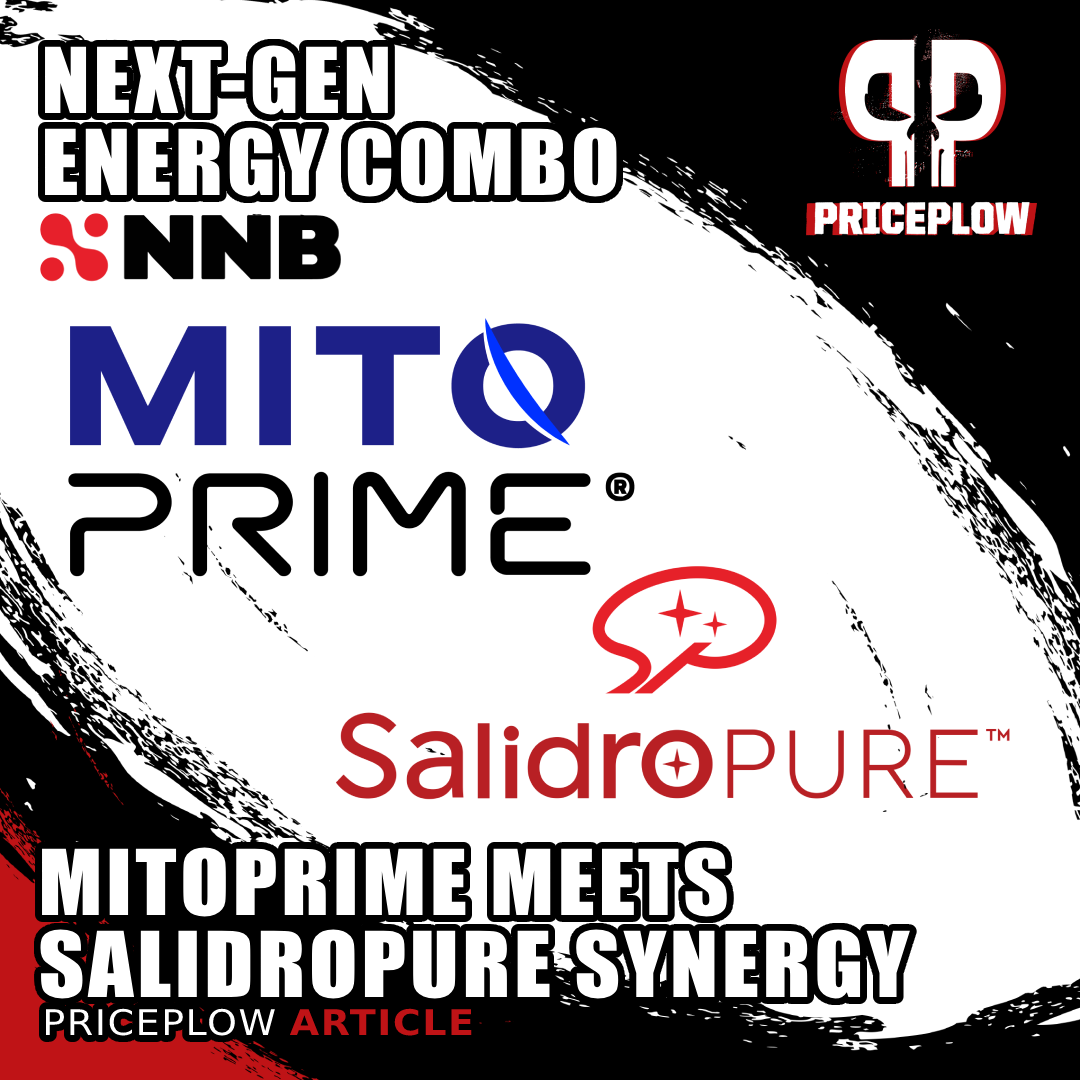
NNB Nutrition introduces MitoPrime and SalidroPure - two innovative ingredients that work at the cellular level to deliver clean, sustainable energy without crashes.
MitoPrime wasn't created by accident. It represents the culmination of NNB Nutrition's intensive research and development capabilities. Founded in 2015 by industrial chemist Kylin Liao and guided scientifically by renowned biochemist Shawn Wells, NNB Nutrition set out with a revolutionary mission: to create entirely new ingredients that would transform the supplement industry.
While NNB initially made its mark with ketone-based ingredients like KetoVantage (now marketed as goBHB), the company's vision quickly expanded to address broader health concerns through what Shawn Wells calls "Ingredient City" – a versatile manufacturing platform capable of producing multiple innovative compounds with rapid adaptability. This strategic approach to ingredient development allowed NNB to expand beyond metabolic health into areas like cognitive function, performance enhancement, and longevity support. This is discussed in the NNB Nutrition Story article.
MitoPrime emerged from this innovative ecosystem as part of NNB's "Prime Series", which focuses on optimizing performance and recovery. Released alongside other groundbreaking ingredients like HydroPrime (high-yield glycerol) and CurcuPrime (tetrahydrocurcumin), MitoPrime was positioned to address the critical need for cellular protection and mitochondrial support.
What Makes MitoPrime Special: The Gold Standard in L-Ergothioneine
MitoPrime stands apart from generic ergothioneine supplements through several key distinctions that establish its superior quality:
-
Bioactive L-Isomer Purity
MitoPrime delivers the highly bioavailable L-isomer form of ergothioneine at nearly 100% purity, as confirmed by repeated high-performance liquid chromatography (HPLC) testing. Unlike many ingredient suppliers who offer mixed isomers or lower-purity versions, NNB ensures that every milligram of MitoPrime delivers maximum biological activity.
-
Advanced Fermentation Production
NNB employs a patented, all-natural fermentation process to produce MitoPrime, creating a highly-concentrated free acid form that maximizes bioavailability. This fermentation approach not only ensures consistency in the final product but also aligns with consumer demand for naturally-derived ingredients.
-
Pharmaceutical-Grade Manufacturing
Leveraging NNB's expansive manufacturing capabilities – spanning over 1,000,000 square feet with more than 100 researchers worldwide – MitoPrime benefits from pharmaceutical-grade quality control standards. This ensures batch-to-batch consistency and eliminates concerns about environmental contaminants that can affect plant-derived extracts.
-
Stability and Formulation Versatility
MitoPrime offers excellent stability in both liquid and powder applications, making it versatile for various product formats from ready-to-drink beverages to capsules and powders. This formulation flexibility has been demonstrated in real-world applications, including its inclusion in the promotional XPO NRG drink showcased at SupplySide West 2024.
Growing Adoption in the Supplement Industry
Since its introduction, MitoPrime has gained significant traction among forward-thinking brands looking to differentiate their products with science-backed, innovative ingredients. The compelling research on ergothioneine's role in cellular protection, mitochondrial support, and healthy aging has positioned MitoPrime as a key component in several emerging supplement categories:
-
Premium Nootropic Formulations
MitoPrime will become increasingly popular addition to advanced nootropic supplements, where it complements other cognitive enhancers through its unique ability to protect brain cells from oxidative stress while supporting mitochondrial function. Its inclusion in NNB Nutrition's comprehensive brain health platform alongside ingredients like GeniusPure (Alpha-GPC) and SalidroPure (salidroside sold by NutriScience) has further cemented its status as a premier cognitive support ingredient. You can learn more about the experiential combination of high-dose MitoPrime + SalidroPure, discussed below:
-
Next-Generation Energy Formulations
The energy supplement category has evolved beyond simple high-stimulant formulas toward more sustainable, mitochondrial-supporting approaches. MitoPrime has found a natural home in these products, where it works at the cellular level to protect mitochondria (the body's energy powerhouses) from oxidative damage. When paired with adaptogens like SalidroPure, MitoPrime helps deliver clean, sustained energy without the crash associated with traditional stimulants.
-
Longevity and Healthy Aging Supplements
As consumer interest in longevity science continues to grow, MitoPrime has emerged as a foundational ingredient in anti-aging formulations. Its classification as a "longevity vitamin" by prominent researchers and its association with reduced risk of age-related cognitive decline have made it particularly valuable in products targeting healthy aging.
-
Immune Support Products
MitoPrime's impressive anti-inflammatory properties and its ability to support cellular resilience have led to its inclusion in immune support formulations.
Recommended Dosing Protocols Based on Research
Based on extensive research and regulatory safety assessments, the following dosing guidelines have been established for MitoPrime supplementation:
Standard Effective Dose
The most common recommended dose for MitoPrime is 5-10mg, taken 1-3 times daily (for a total daily dose of 5-30mg). This aligns with the European Food Safety Authority's determination that ergothioneine supplementation up to 30mg per day is safe for adults.
Loading Phase Considerations
Because ergothioneine accumulates in the body over time with a biological half-life measured in weeks rather than hours, some protocols recommend an initial loading phase. This approach leverages the body's ability to store ergothioneine in tissues where it's most needed.
Context-Specific Dosing
Dosing may be adjusted based on specific applications:
- Cognitive support: 5-10mg once or twice daily
- Exercise recovery: 10mg before or after intense physical activity
- General wellness: 5mg daily for maintenance
It's worth noting that the excellent safety profile of L-ergothioneine allows for flexibility in dosing strategies. Safety trials have administered doses as high as 1,500-1,600mg per kilogram of body weight in rodent studies without significant adverse effects.
A Part of NNB Nutrition’s Brain Health Platform
MitoPrime serves as a cornerstone ingredient in NNB Nutrition's comprehensive brain health platform, which offers beverage-stable cognitive ingredients designed for next-generation nootropic formulations. This platform presents MitoPrime alongside GeniusPure (Alpha-GPC), SalidroPure (salidroside), TyroPrime (L-Tyrosine), C8Vantage (C8 MCT), and NeuroFlow (phosphatidylserine).
The future looks bright for MitoPrime adoption across the supplement industry. As research continues to validate ergothioneine's role in cellular protection, mitochondrial support, and healthy aging, we can expect to see MitoPrime featured in an increasingly diverse range of premium formulations focused on performance, longevity, and overall wellness.
Conclusion: Ergothioneine = The Longevity Nutrient We’ve Been Searching For
The convergence of findings from these three landmark scientific reviews paints a convincing portrait of ergothioneine as a unique and potentially essential nutrient for human health. From Paul's characterization of ergothioneine as a "stress vitamin" to Tian's exploration of its role as a "conditionally essential micronutrient" and Chen's deep dive into its anti-aging mechanisms, the scientific consensus is strengthening rapidly: ergothioneine is not just another antioxidant, but a specialized cellular protector with profound implications for healthy aging.
A New Paradigm in Nutritional Science
What makes these findings so interesting is how they reshape our understanding of what constitutes an "essential nutrient." Unlike classical vitamins with obvious deficiency syndromes, ergothioneine's importance becomes apparent during aging and oxidative stress, which is precisely when our natural defenses begin to falter. Its dedicated transporter, remarkable tissue retention, and association with lower risk of age-related diseases all point to a molecule that evolution has deemed too important to leave to chance.
The mechanisms revealed in these reviews explain why ergothioneine stands apart from other antioxidants. It doesn't just neutralize free radicals, it helps orchestrate our entire cellular defense system, maintains DNA integrity, and potentially influences the very programming of our aging process.
The Future of Ergothioneine Research
As our population continues to age, the need for evidence-based interventions to support healthy longevity becomes increasingly urgent. Ergothioneine research stands at a promising frontier, with several exciting directions on the horizon:
- Human intervention trials: As Tian's team noted, controlled clinical studies like their "ErgMS" trial will provide definitive evidence of ergothioneine's effects on metabolic health and aging biomarkers.
- Personalized approaches: Research into how genetic variations in the OCTN1/SLC22A4 transporter affect ergothioneine absorption could lead to tailored supplementation strategies.
- Synergistic combinations: Investigations into how ergothioneine works alongside other longevity-promoting compounds could reveal powerful new formulation possibilities.
- Mitochondrial targeting: Resolving questions about ergothioneine's presence in mitochondria could open new applications for energetic support and fatigue reduction.
The accessibility of high-quality ergothioneine supplements like MitoPrime makes this one of the few areas where cutting-edge longevity science is already available to consumers today, rather than remaining confined to research laboratories.
MitoPrime: Leading the Ergothioneine Revolution
For supplement brands and health-conscious consumers looking to incorporate this promising nutrient, NNB Nutrition's MitoPrime represents the gold standard in ergothioneine supplementation. Its pharmaceutical-grade purity, bioactive L-isomer form, and advanced fermentation process ensure maximum efficacy at the recommended dosage range of 5-30mg daily.
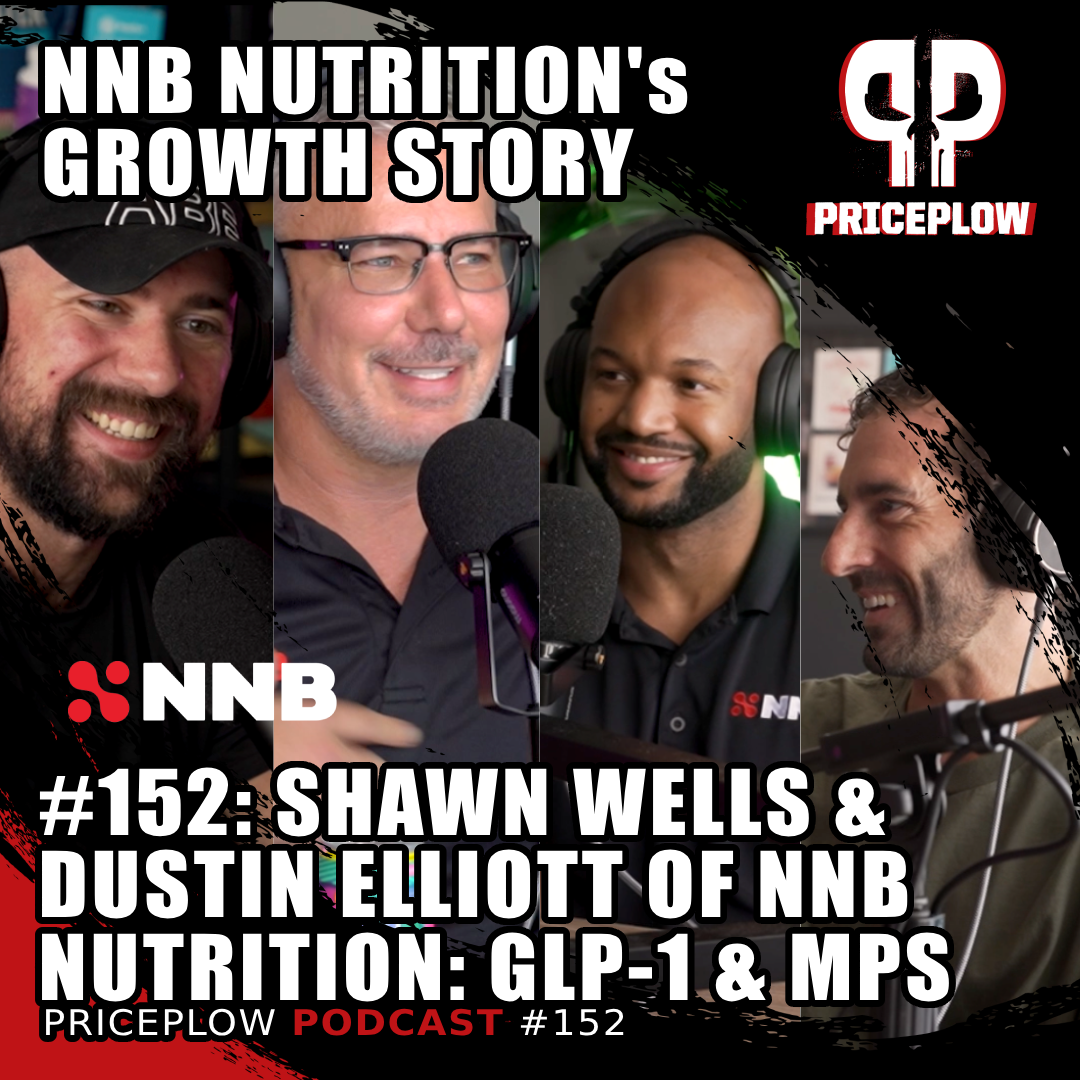
Shawn Wells and Dustin Elliott of NNB Nutrition join the PricePlow Podcast for Episode #152 to discuss innovative ingredients that capture ongoing trends like GLP-1 and MPS. We also get into Dustin's trip to China, NNB's participation in XPO NRG with MitoPrime, and Shawn's psychedelic experiences and his post-trip supplement stack.
MitoPrime's versatility makes it an ideal addition to formulations targeting cognitive performance, energy production, exercise recovery, and healthy aging. Its inclusion in NNB Nutrition's comprehensive brain health platform demonstrates its vital role in next-generation nootropic development, as highlighted in the company's recent XPO NRG promotional drink showcased at SupplySide West 2024.
To learn more about NNB Nutrition's innovative approach to ingredient development, including MitoPrime, check out our podcast with Shawn Wells and Dustin Elliott (Episode #152), where they discuss their latest breakthroughs and future directions.
As our understanding of ergothioneine continues to evolve, one thing is becoming increasingly clear: this "forgotten antioxidant" may be one of nature's most powerful tools for supporting healthy longevity. Whether through mushroom-rich diets or targeted supplementation with ingredients like MitoPrime, ensuring adequate ergothioneine levels appears to be a promising strategy for maintaining cellular health throughout the aging process.
Stay up to date with the latest research and product developments featuring this groundbreaking ingredient by subscribing to PricePlow's alerts:
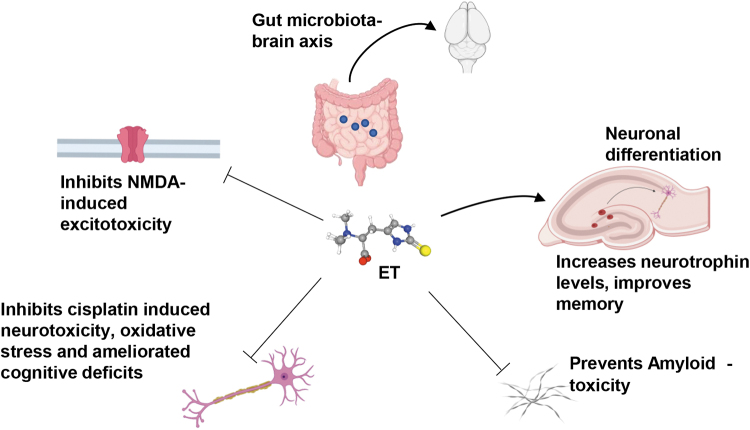
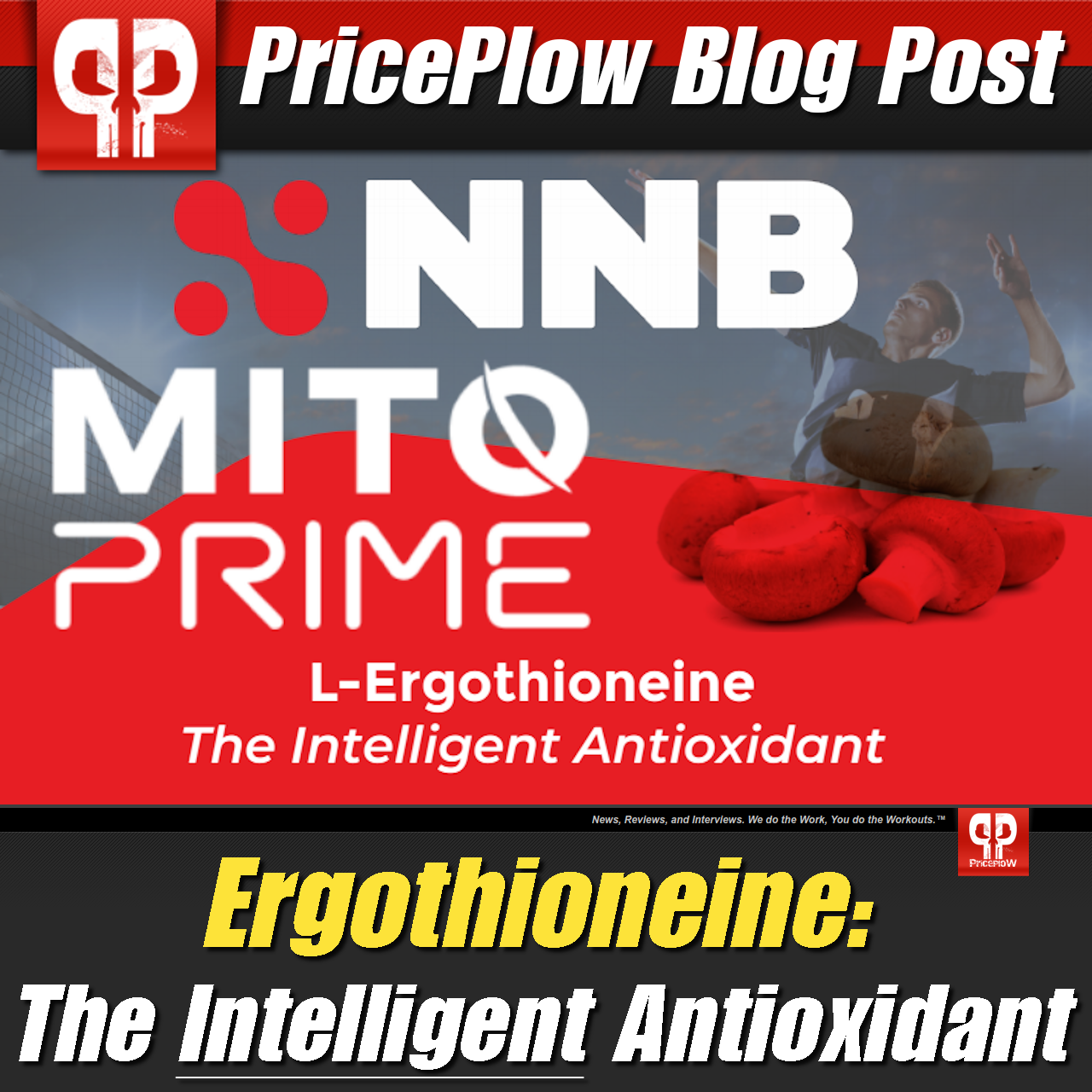
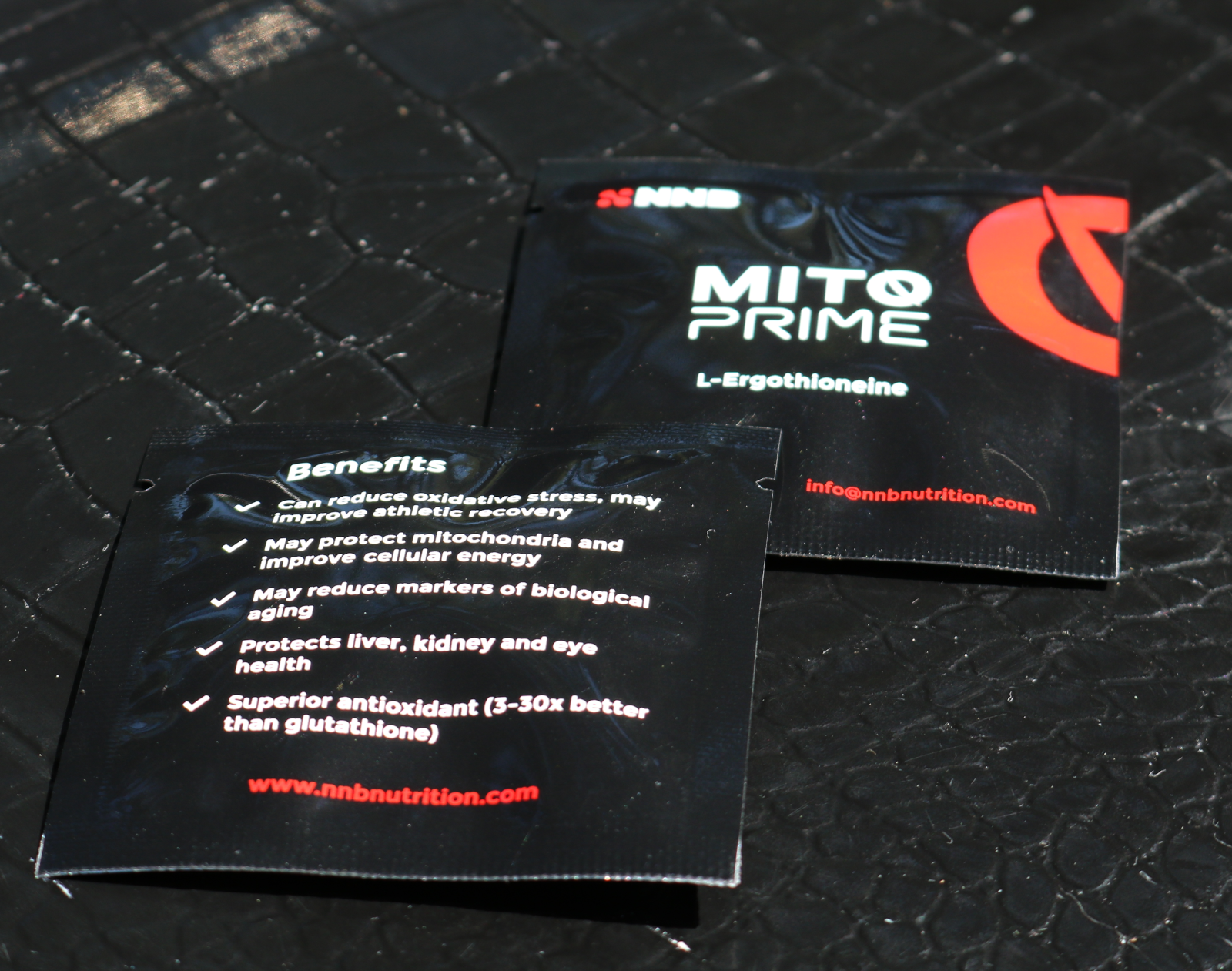
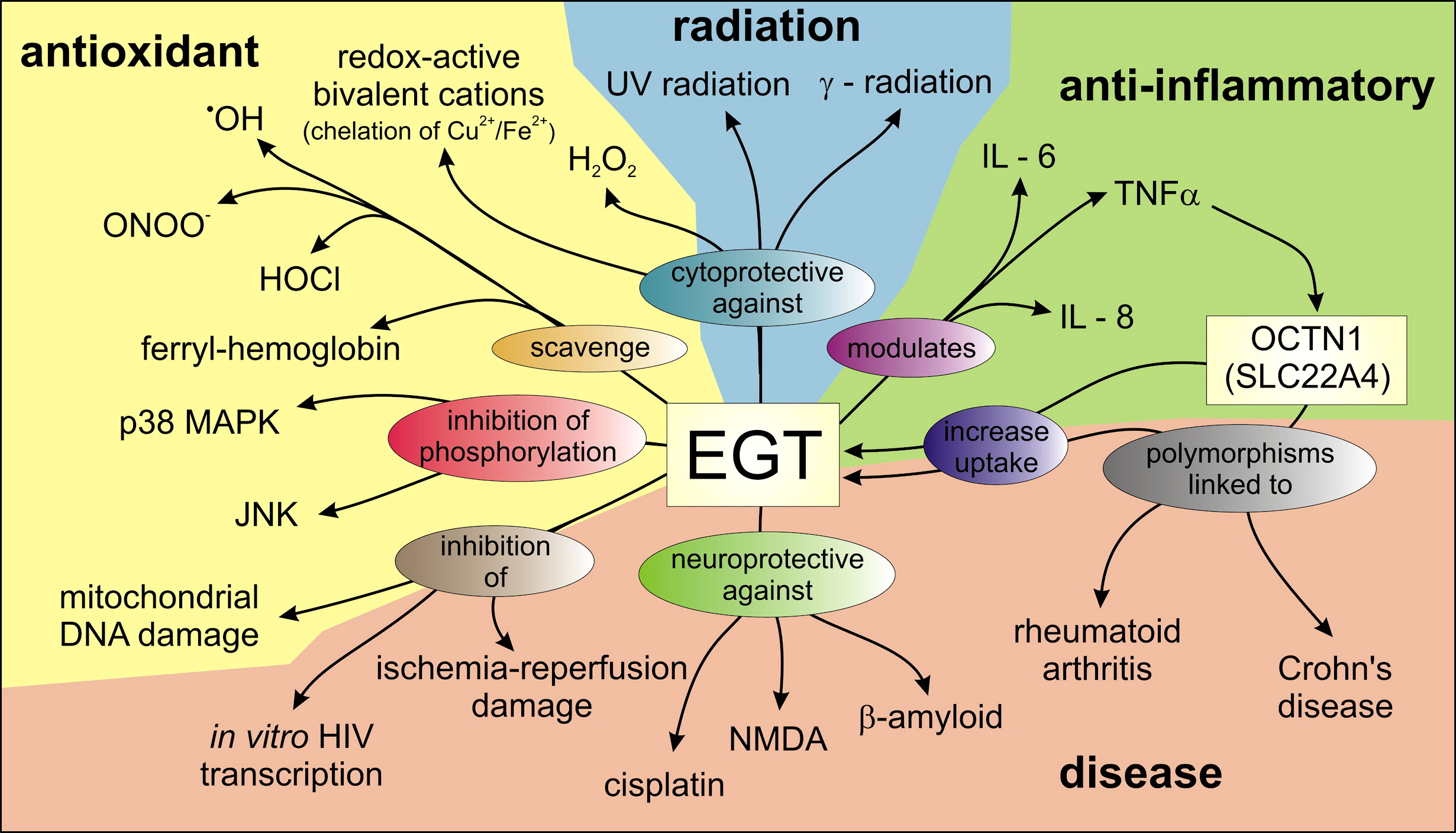

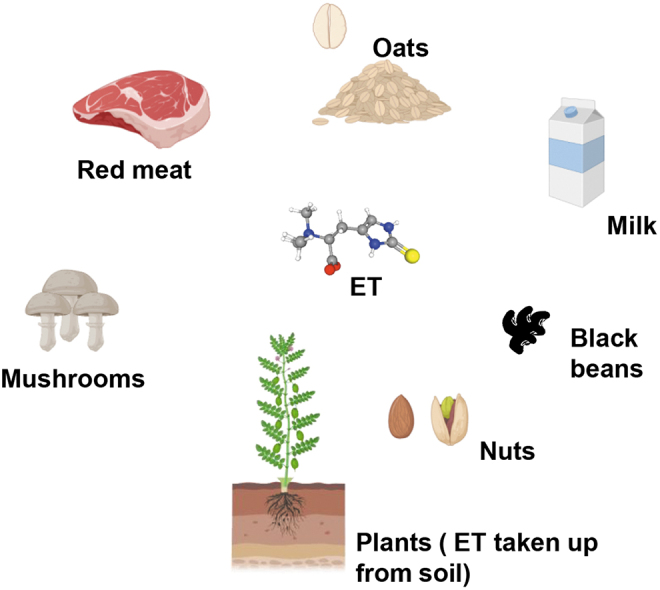
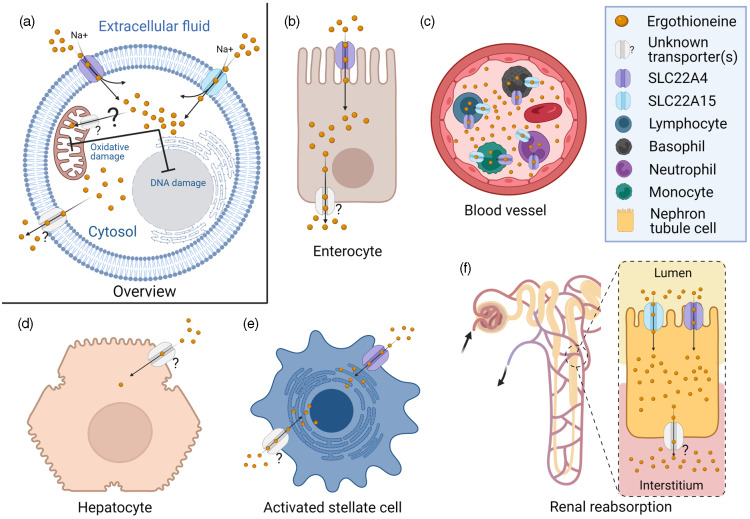
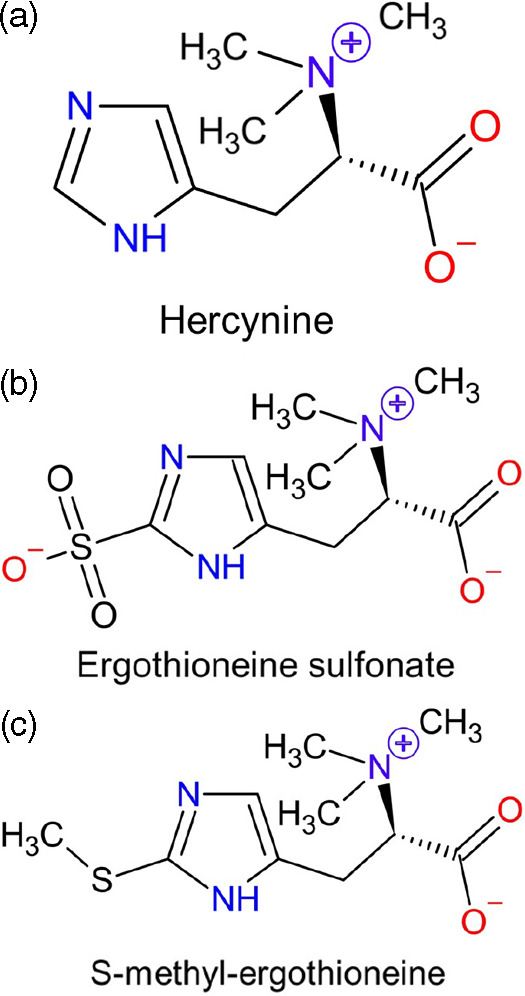
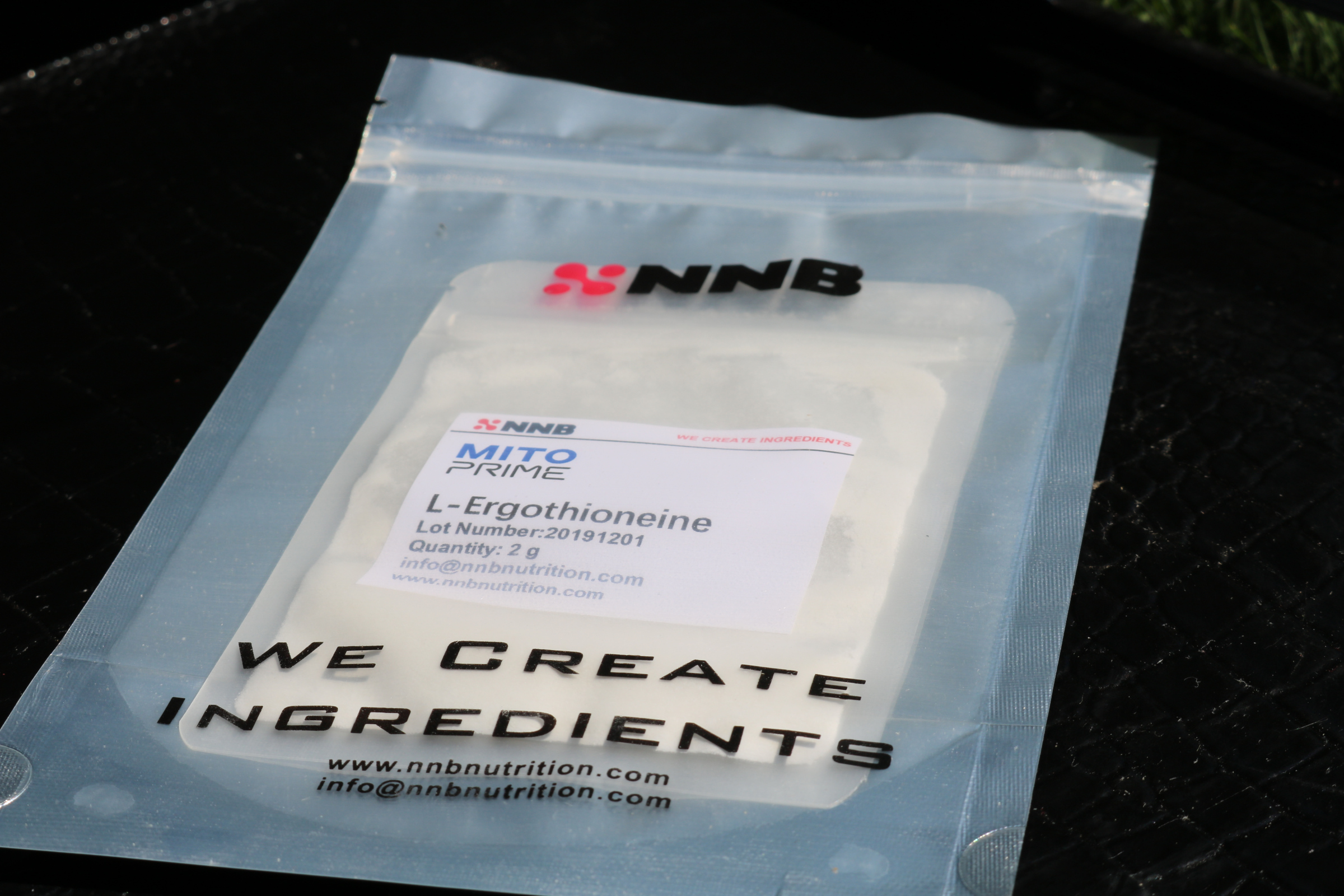
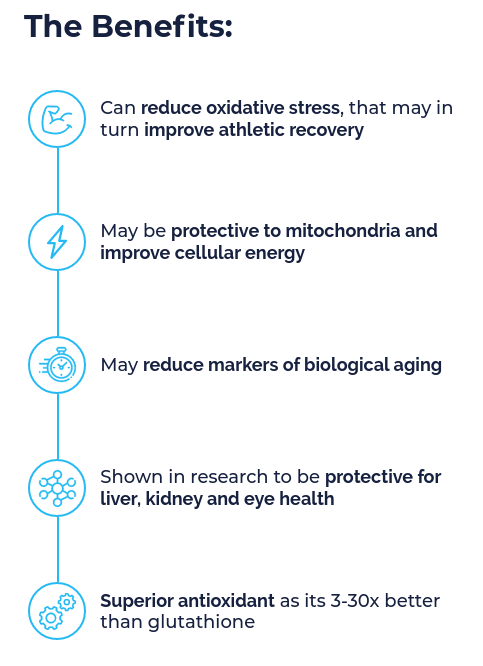

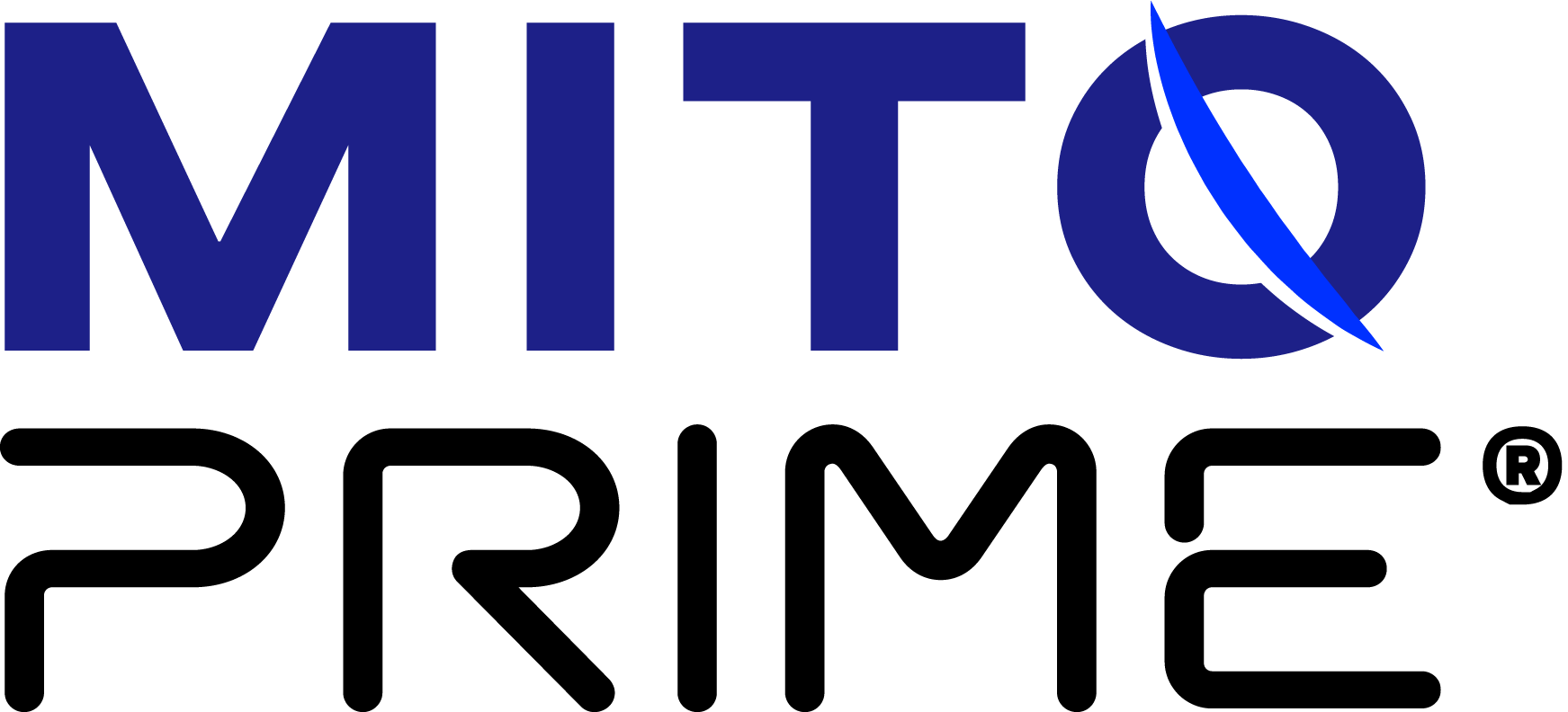

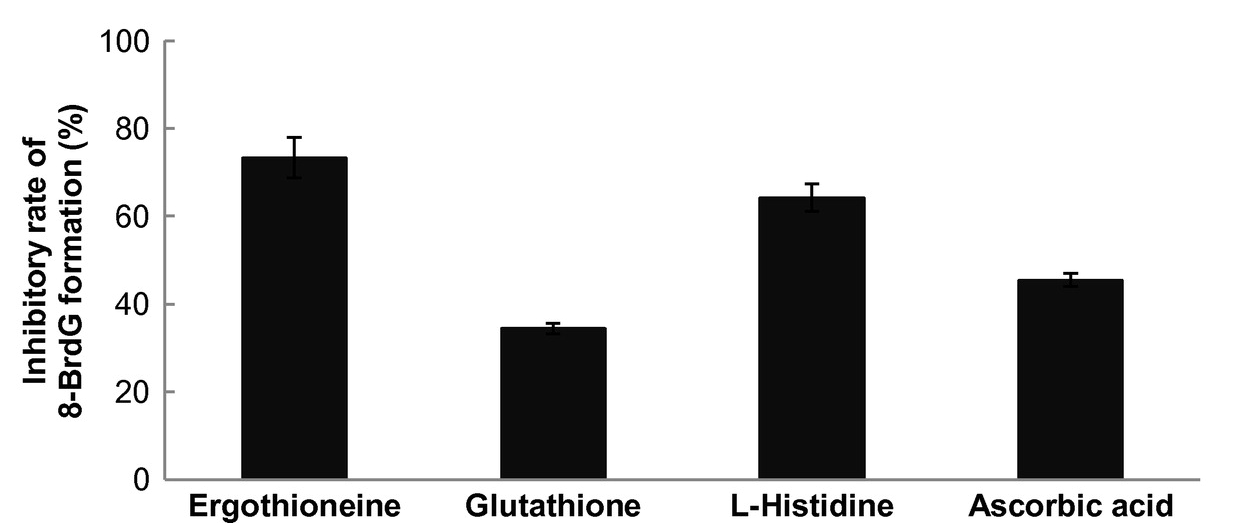
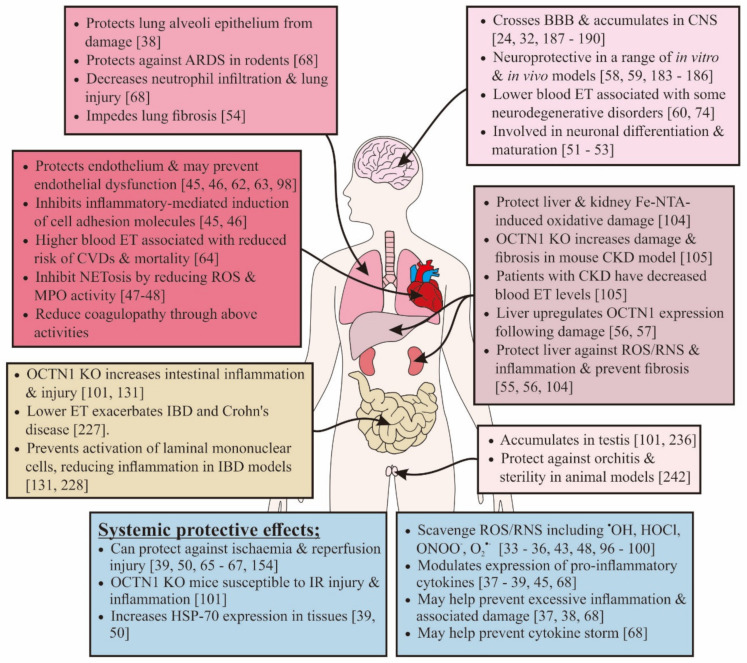
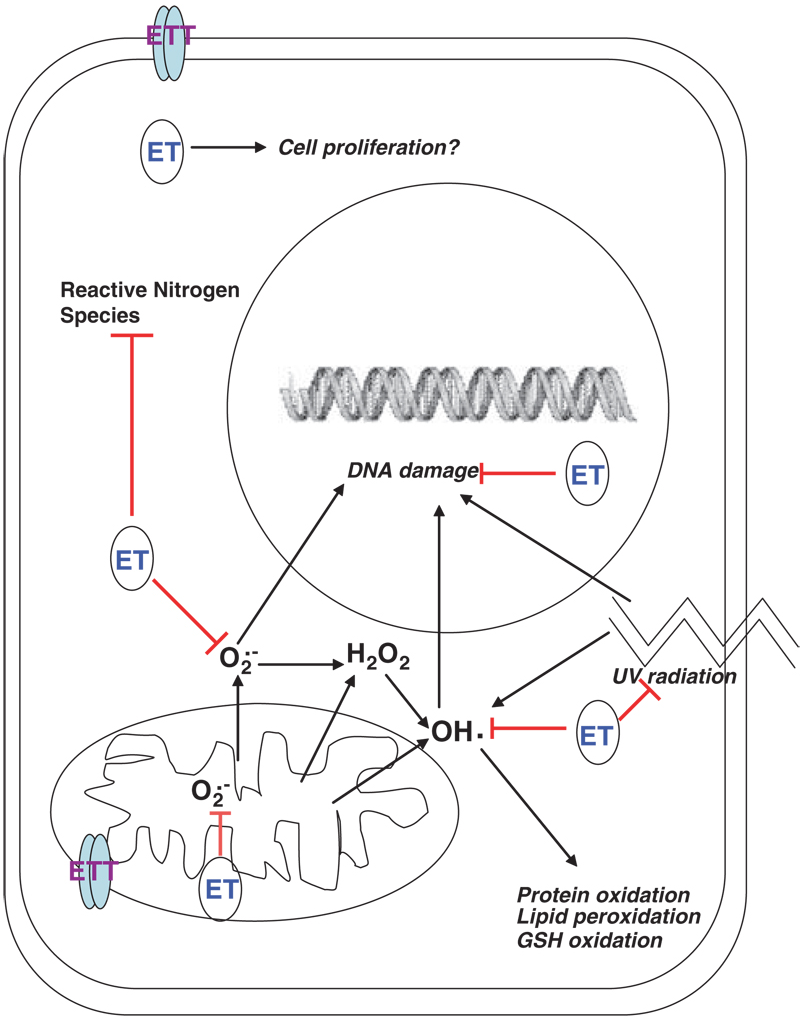

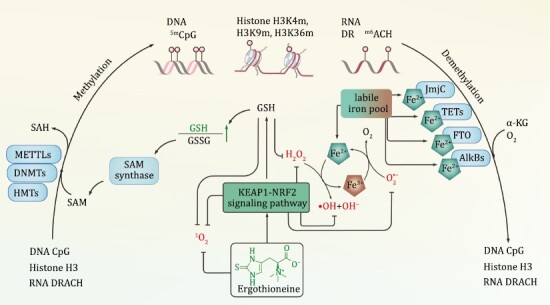
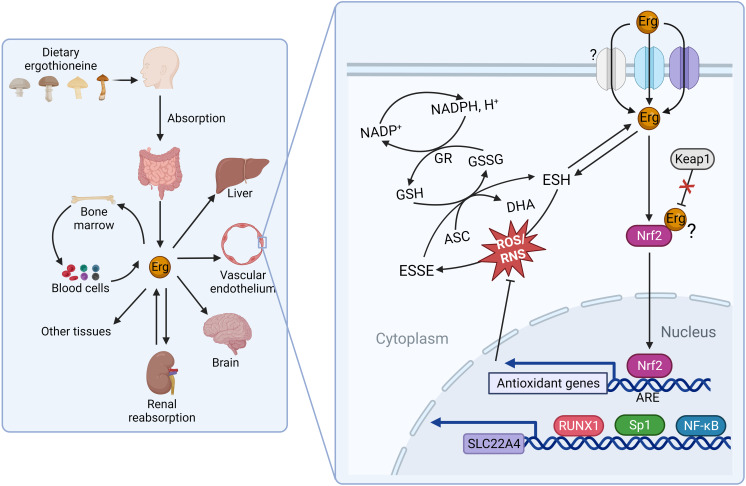
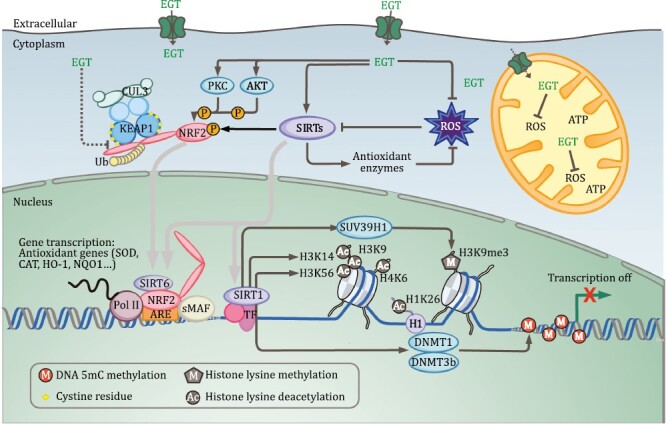

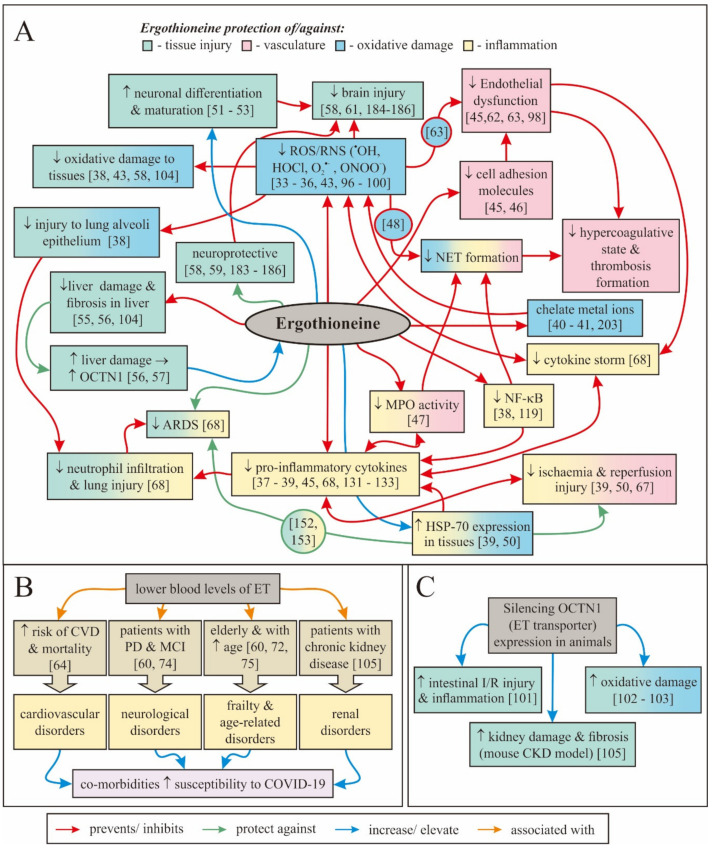
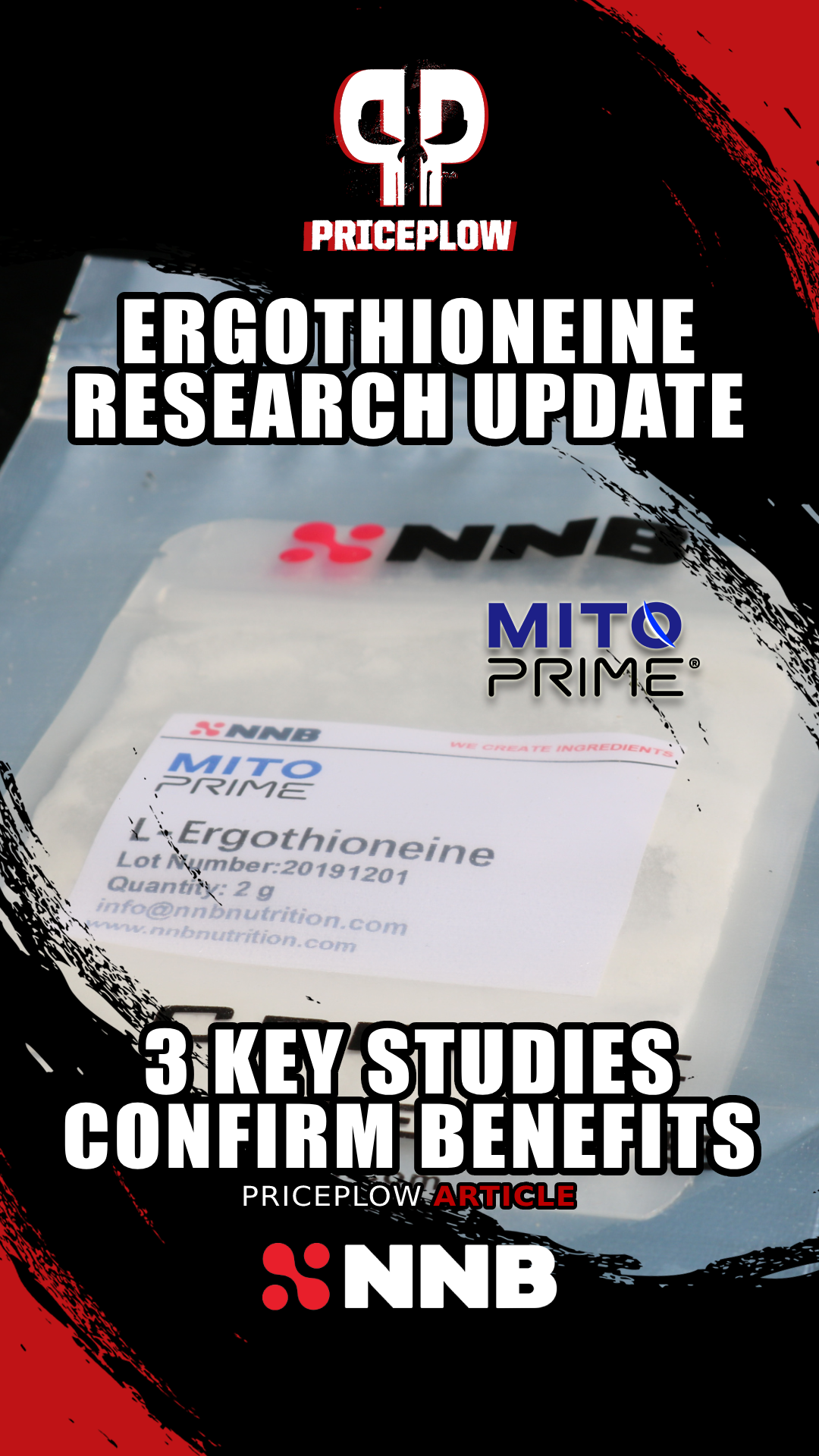
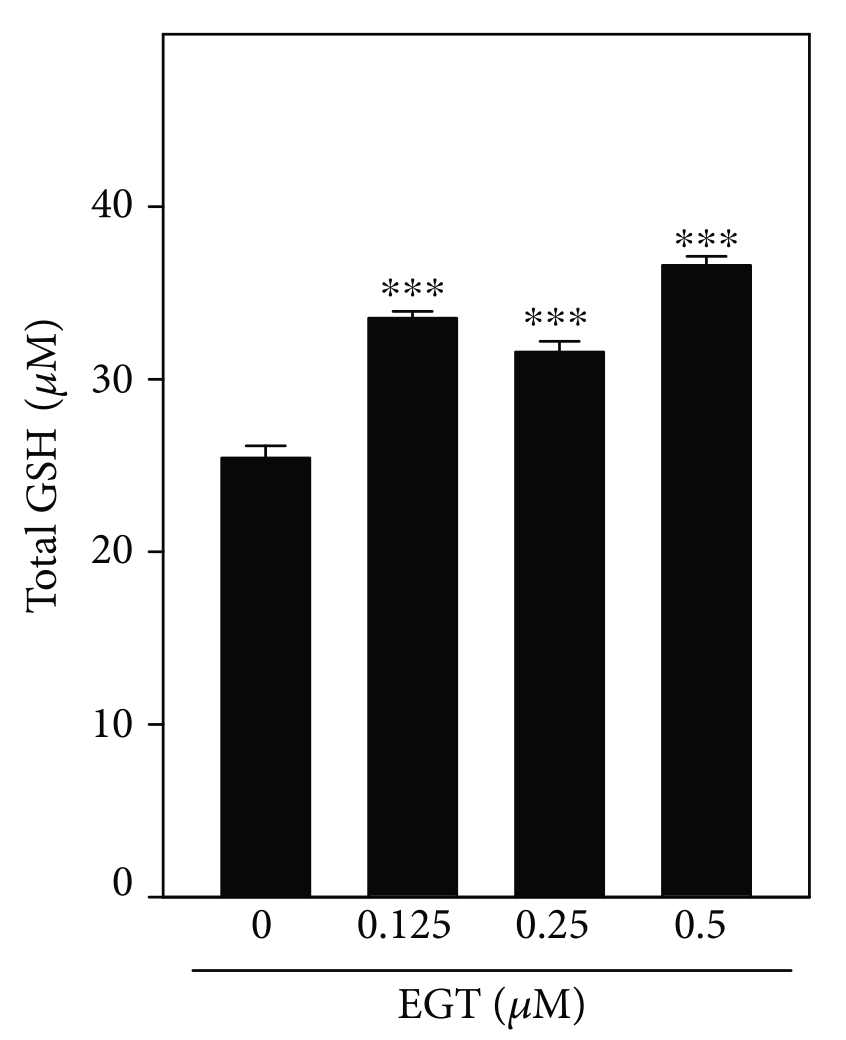
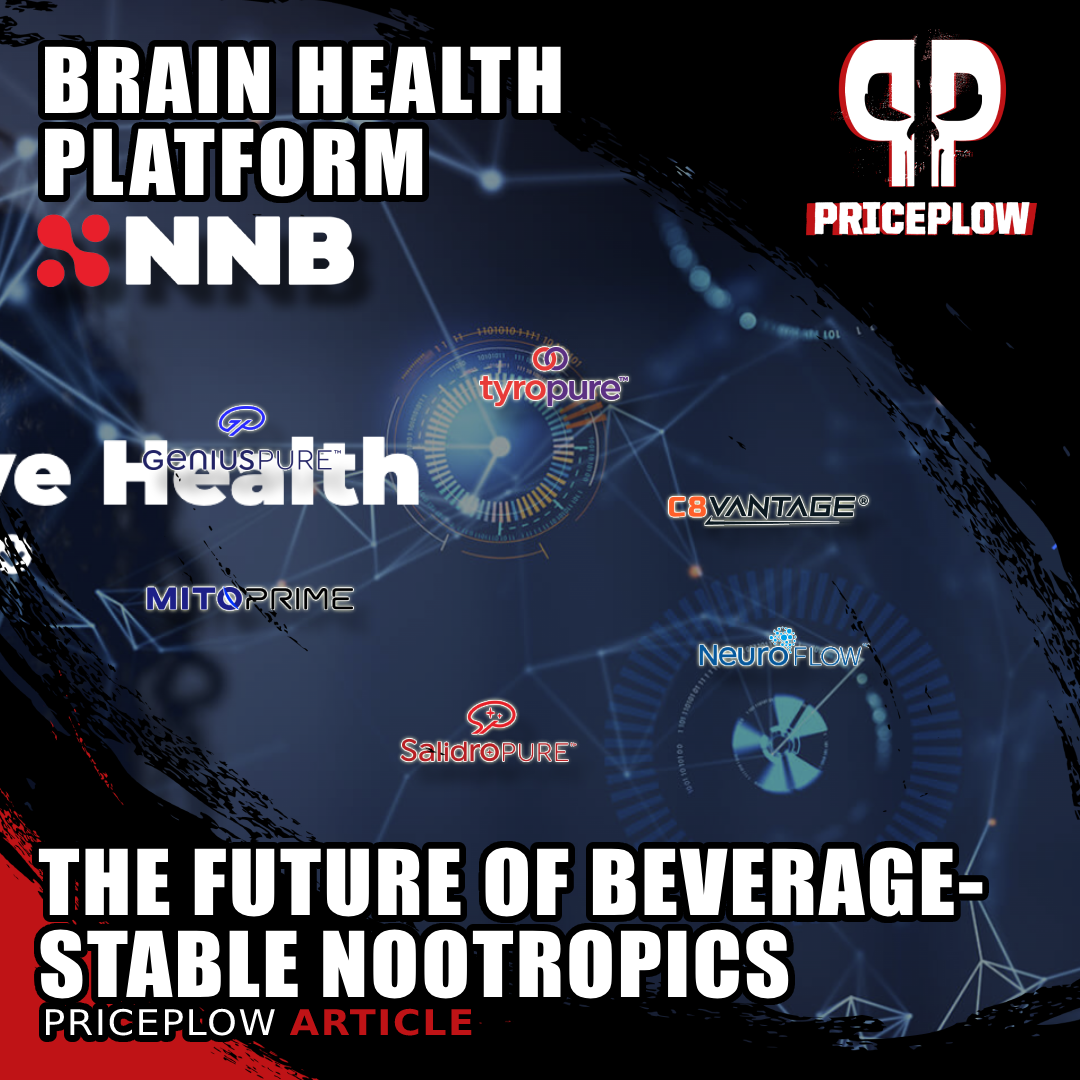



Comments and Discussion (Powered by the PricePlow Forum)